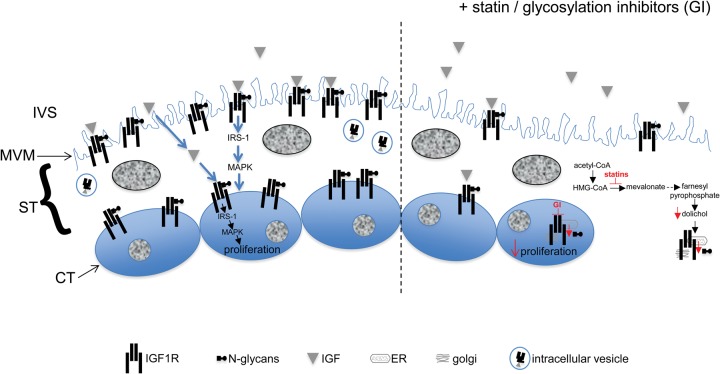Figure 5.
Schematic representation of the effect of statins/glycosylation inhibitors on insulin-like growth factor 1 receptor (IGF1R) and cytotrophoblast proliferation. IGF present in the intervillous space (IVS) stimulates the N-glycosylated IGF1R located at the microvillous membrane (MVM) of syncytiotrophoblast (ST) and/or cytotrophoblast (CT) plasma membrane to activate intracellular signalling molecules, previously shown to include MAPK (Forbes et al., 2008b), and promote cytotrophoblast proliferation. We propose that statins inhibit the production of mevalonate and downstream pathways (represented by dotted arrow) to result in a reduction in the levels of farnesyl pyrophosphate, the precursor of the dolichol phosphate that is needed for N-glycosylation in the ST (as shown) and in the CT. As a consequence, the glycosylation of IGF1R in the endoplasmic reticulum (ER)/golgi apparatus is reduced which leads to less IGF1R being expressed at the MVM/cytotrophoblast cell surface and abolition of IGF-stimulated cytotrophoblast proliferation. Glycosylation inhibitors (GI) also affect IGF1R glyco-processing in the ER/golgi apparatus of ST/CT and thus the functional effects of these compounds are similar to those observed in response to statins.

